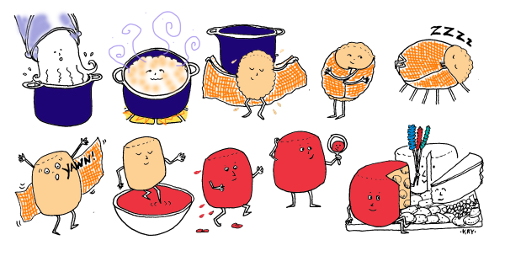





Dutton lab IN THE NEWS...
Rachel makes an appearance on the new Netflix series, Ada Twist, Scientist, Season 1, episode 6: The Great Stink!
Excellent article in The Scientist on our work using high-throughput genetic screens to understand communities.
Research in the Dutton lab was featured in San Diego Magazine.
Rachel talks with Ira Flatow on NPR's Science Friday!
UCSD Triton Magazine features research in the Dutton lab!
We're in the New York Times again! Great article about the microbiology research based at Jasper Hill Farm and Cellars!
Ben Wolfe and Rachel are featured in Episode 4: Earth, on the Netflix documentary series Cooked, based on the book by Michael Pollan.
Wired magazine, the Harvard Gazette, and the Scientific American blog Oscillator all covered our Cell paper.
Rachel was interviewed for Cell's "40 under 40" series.
Nature News wrote up the Science of Artisan Cheese meeting (August 2014) Link to Article
Rachel's article on food microbiology was published on Eater.com Link to article
The Lab was profiled in Edible Boston (Spring 2013) Link to article
We're in the New York Times! (September 19, 2012) Link to article
Our collaboration with Momofuku was featured in Wired magazine (5/16/2012).Link to article
Our collaboration with Momofuku was also featured in the Smithsonian magazine blog. Link to article
Ben's article on the microbial terrior of American artisanal salamis was published in Lucky Peach magazine, Issue 4.
Ben and Rachel's article on the microbiology of miso was published in Lucky Peach magazine, Issue 2.
Ben's Harvard Summer School course on food microbiology was featured in the Harvard Gazette. Link to article
Our photos of cheese microbes were featured in Culture magazine (Spring 2011).Link to article
The lab was featured in Culture magazine (Fall 2010). Link to article